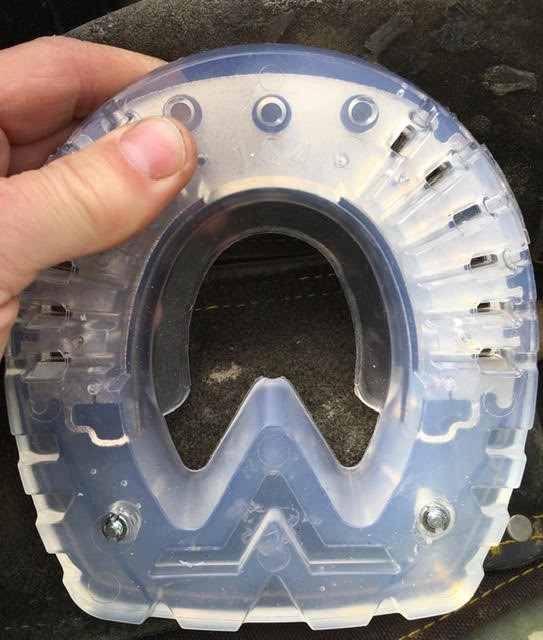The Transition from Steel to EasyShoe Versa Grips
Written by Deanna Stoppler, Hoof Care Practitioner
In January, 2021, I began the process of transitioning my full-time farrier business from using steel and aluminum shoes on horses to offering only composite nail and glue-on shoes. The transition involved reconfiguring my workspace from a fully-outfitted farrier trailer to working out of the back of my truck and deciding which nail on composite shoes would work best.
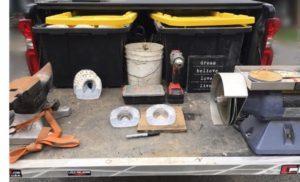
I have been gluing on the EasyShoe Performance shoes since they came out, but I haven’t spent a lot of time thinking about the benefits of the nail-on composite options versus nail-on steel and aluminum shoes. And the choice of nail-on composite shoes at that time were slim. Since the Versa shoe line was released, I began considering their function and the long-term effects and benefits of composites versus steel and aluminum.
The Versa Grip allows for more flexibility of the hoof wall upon load while maintaining rigidity with the steel insert from the widest part of the foot forward—not too flexible and not too rigid. The shoe has a frog support region that helps prevent degradation of the soft tissues in the back of the foot (as tends to happen with a plain rim shoe). For clients who want a more traditional looking shoe, the Versa Grip has side clips that from the top looking down look like a standard steel shoe with clips. The clips also act as a “nail,” which makes it possible to use less nails in the hoof wall when nailing it on.
Shoe modifications make the Versa Grip customizable to each horse. I find that a grinder and a small anvil really help when making modifications. To fit the shoe, I select the shoe size that I think is correct and widen the clips using my small anvil. The clips can also be widened using pull offs. Just grab the clip and pry outward. Once the clips are widened, I place the shoe on the foot and assess fit.

Most horses that I’ve shod in the Versa Grips need the heels of the shoe brought in. To do this I place the shoe on the hoof and use a Sharpie to trace the heel width onto the shoe. Be careful when grinding to your marked line. I learned early on that it is easy to grind away too much material. After determining heel width, I look at breakover and decide if I need to grind more breakover into the shoe. Once the shoe is nailed on, breakover can be adjusted using a sharp rasp.
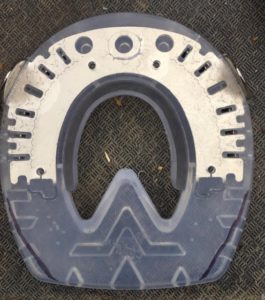
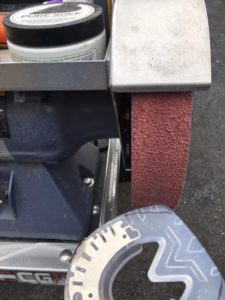
If working on horses with sole sensitivity in the toe region, the Versa Grip can be modified to offer sole relief. If grinding down the toe region of the shoe (on the sole side), I tend to grind away some of the debris guard, which prevents pressure on the area near the apex of the frog. The dirt guard is flexible and shouldn’t bother the horse, but sometimes I remove a bit of material to be on the safe side.
For traction, I add two quick studs to the heel region of certain shoes. That way I don’t have to worry about horses slipping on less abrasive terrain. The quick studs can be seated into the shoe deep enough so they don’t stick up too high and possibly cause excess leverage to tendons or ligaments.
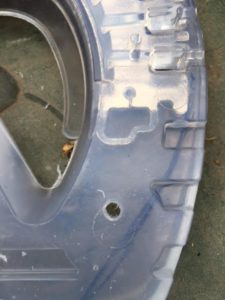
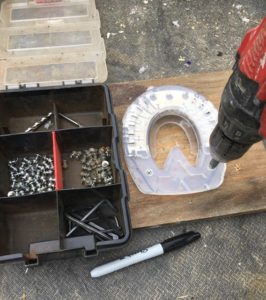
I have a number of horses in the Versa Grips shoes and, so far, reports are positive. Some horses that come to mind are an OTTB who maintained a more upright hoof pastern axis during the shoeing cycle. When I pulled the shoes to reset, her heels weren’t crushed and her frog was in line with the heels rather than prolapsed (like it was when she arrived to the new owner shod in rim shoes).
Another horse who is very difficult to nail due to a very tight white line has made nailing less of a risky business because the nailing options in the shoe are so adjustable—the nail holes allow for coarse or fine nailing. The shoes are more forgiving to hammer blows, as well. I have a couple of horses who do not like the impact of the hammer hitting the nail and vibrating through steel. Now with less concussion force when hammering the horses tend to be more relaxed.
Overall, I’m super impressed with the Versa Grip shoes. They offer the farrier industry a step toward maintaining a more naturally shod hoof. The shoe is highly adjustable; supportive to the entire foot, causing less peripheral loading; and durable, lasting multiple shoeing cycles.


